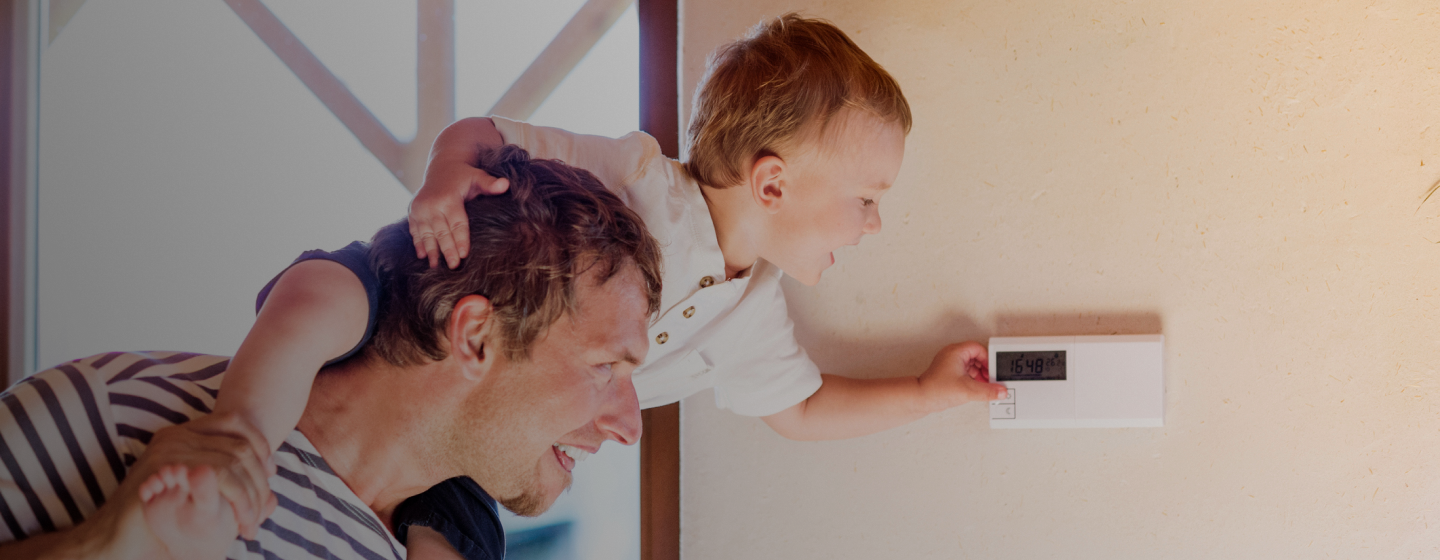Energy Efficient HVAC
With no money down and no payments for up to a year or more, you can afford to upgrade right away.1


Ygrene makes energy-efficient HVACs an affordable option.
When your heater or air conditioning isn’t working (or isn’t working well), you don’t want to wait — and you shouldn’t have to.
With Ygrene, you can install a more efficient model (and take care of necessary ductwork) with no upfront costs, no payments for up to a year or more, and terms that allow you to spread cost over the life of the product.
Our flexible financing also makes it easier to get the model you really want, so you can opt for a highly efficient system to help you start saving right away.
HVAC financing, made simple
-
Check eligibility
Make sure your home is located in a Ygrene-approved area.
-
Apply
Submit your application and get an approval decision in under 30 minutes.
-
Get started
Sign your financing docs and choose your contractor.2
Finally, financing built in your favor.
Affordable now — and affordable later, too.
Enjoy payments equivalent to just $91/month, with no payments until next year.3
Thousands of homeowners love Ygrene
Frequently Asked Questions
The most efficient central air conditioners are those that have a high SEER (seasonal energy efficiency rating) usually from 20 to 26. A SEER rating is based on how adaptive the system is to season changes. Some models will also include an EER, or energy efficiency rating, which is based on the peak efficiency of the model. For homeowners who live in an area where the seasonal temperatures shift, SEER is the most important marker.
In terms of highest-performance models, the Lennox Signature Series XC25, the most premium of Lennox’s Signature Series, offers a 26 SEER rating and aims to eliminate fossil fuel use entirely. Replacing an aging system with this or a comparable system could increase your efficiency by 50-60%. Runners up include the Amana AVXC20 and Daikin DX20VC, which both offer a 24.5 SEER / 14 EER rating and function as variable capacity air conditioners.
Of course, these are the top performers on the market — there are many energy-efficient HVAC systems that will help you save significantly and may offer a slightly lower price point. As an alternative, some heat pumps may offer greater efficiency, but don’t include central air.
Most HVAC systems available on the market today offer some level of energy efficiency. They’re likely to be more efficient than an older model anyway, simply because they include new technologies and are functionally optimally.
That said, the SEER (seasonal energy efficiency ratio) is the rating most commonly looked at to understand how efficient a system is. The rating usually ranges from 13-23 (but now goes up to 26+!) with the higher numbers indicating the lowest levels of energy waste. Other commonly used rating systems include EER (energy efficiency rating) and AFUE (annual fuel utilization efficiency), though SEER is generally the industry gold standard.
For context, ENERGY STAR-rated products are required to have at least a 14.5 SEER rating, and an 11 EER (for single models) and 12 EER (for split models). With models like the Lennox Signature Series XC25 offering a 26 SEER rating, there’s clearly a large range of efficiency options available to help you reduce or virtually eliminate your energy bill and carbon footprint.
Just like a car or any other mechanical product, maintenance is an important part of keeping your system running optimally and lasting longer. Make sure to schedule annual maintenance, change your air filter regularly, and have your ductwork inspected occasionally to ensure there’s no damage, blockages, or harmful molds inside.
If your energy bill is going up and you aren’t sure of the cause, consider a home energy audit. A professional can assess how your system works and diagnose what potential issues you’re facing that’s impacting efficiency.
The answer to this question depends on a range of factors — but by taking the right steps, the answer is most likely yes. A new HVAC system (any system) is likely to save you at least 20% on your current cooling costs. If you choose a higher-SEER model, it may be significantly more. (Since you are going through the process of an upgrade, you may want to consider a SEER of at least 15 to see significantly improved performance.)
Calculating savings can be quite variable, but here’s a general rule of thumb: if you consider the cost of your HVAC financing on an annual basis, and then compare that to what you spend annually on energy costs, you can gain a sense of what you may save. Individual products may also indicate a percentage range of savings, which you can factor into your calculations. (ie: 20% savings for a 15 SEER model, and 50-60% savings on a 25 SEER model.) Make sure to contact a licensed professional for additional details.
The answer to this depends on the rating system you’re looking at. For a SEER rating system, 14.5 and above qualify for an ENERGY STAR label — though the most desirable ratings go up to as high as 26 SEER. The higher the rating, the more potential for utility savings and the greater the efficiency.
For the EER rating system, (which is primarily only relevant to people who live in climates that are consistent year round) ratings can range from 6 - 12+. For high-efficiency, consider at least a 9 EER or above.
(1) Timing of first payment depends on date of funding; interest accrues after funding
(2) As a property owner, you have the right to choose any contractor you like. If they are not within our network, they will need to qualify to offer Ygrene financing.
(3) Monthly costs are for budgeting purposes only. Ygrene PACE financing is repaid annually with property taxes or monthly through an impound or escrow account. Sample monthly payment of $91 is based on Ygrene's average HVAC financing amount in Florida of $7,691 with a 15 year term and a fixed interest rate of 7.99%. Source: Ygrene cost calculator.







